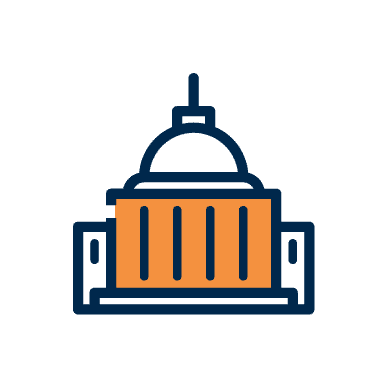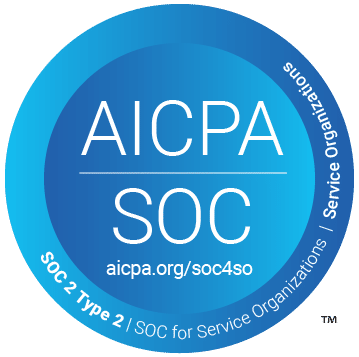Mission and Structure:
The mission of New York’s Office of the Medicaid Inspector General (OMIG) is to “to enhance the integrity of the New York State Medicaid program by preventing and detecting fraudulent, abusive, and wasteful practices within the Medicaid program and recovering improperly expended Medicaid funds while promoting a high quality of patient care.”
Established in 2006 to fight fraud and abuse in the State’s Medicaid program, OMIG was established as an independent office within the New York State Department of Health. The Medicaid Inspector General reports directly to the Governor. OMIG is an autonomous entity comprised of the following offices:
- Agency Coordination and Communications
- Bureau of Compliance
- Bureau of Quality Control and Risk Management
- Division of Administration
- Division of Medicaid Audit
- Division of Medicaid Investigations
- Division of System Utilization and Review
- Office of Counsel
These offices are OMIG’s Business Line Teams responsible for oversight and investigation of the processes and operations of healthcare-related industries and services for the following areas:
- Delivery System Reform Incentive Payment Program
- Home and Community Care Services
- Hospital and Outpatient Services
- Managed Care
- Managed Long- Term Care
- Medical Services in an Educational Setting
- Mental Health, Chemical Dependence, and Developmental Disabilities Services
- Pharmacy and Durable Medical Equipment
- Physicians, Dentists, and Laboratories
- Residential Health Care Facilities
- Transportation OMIG Partnerships
Key Partnerships
To optimize its effectiveness and reach, OMIG collaborates with key departments within the state to execute on its mission. The New York OMIG conducts and supervises all prevention, detection, audit, and investigation efforts in coordination with the following offices:
- Department of Health
- Office of Mental Health
- Office for People with Developmental Disabilities
- Office of Alcoholism and Substance Abuse Services
- Office of Temporary and Disability Assistance
- Office of Children and Family Services
- Justice Center for Protection of People with Developmental Disabilities
- Department of Education
To further this work, OMIG also works closely with CMS, the HHS OIG, the New York State Attorney General’s Medicaid Fraud Control Unit (MFCU), the Bureau of Narcotic Enforcement as well as state law enforcement and district attorneys across the state on a regular basis. In the 2019-2020 OMIG workplan, the agency also restated its commitment to pursuing cases of Medicaid fraud, working with local Departments of Social Services (LDSS), the FBI-directed Health Care Fraud Strike Forces and the U.S. Department of Justice (DOJ) Medicare Fraud Strike Force. OMIG also works with its industry partners, the managed care organizations (MCO) and their special investigation units, to address network provider fraud, waste, and abuse.
OMIG Fraud Focus
The following are types of fraudulent activities, listed on the OMIG website, for which OMIG is consistently monitoring:
Provider fraud:
- Billing for Medicaid services that were not provided
- Giving out, or billing for, unnecessary services
- Selling prescriptions
- Ordering unnecessary tests
- Giving money or presents to patients in return for agreeing to get medical care from someone
- Accepting kickbacks for patient referrals
Patient/Member fraud:
- Lending a Medicaid Identification card to another person;
- Forging or altering a prescription or fiscal order;
- Using multiple Medicaid ID cards;
- Intentionally receiving duplicative, excessive, contraindicated, or conflicting health care services or supplies; and
- Re-selling items provided by the Medicaid program.
OMIG’s Recent Successes and Challenges
The 2019 OMIG Annual Report sets forth recent successes by the agency:
- Cost-avoidance measures that generated savings of more than $2.3 billion.
- Medicaid recoveries – which are generated through provider audits and investigations –accounted for more than $552 million.
- New authorization to conduct annual program integrity reviews of Managed Care Organizations (MCO) and Managed Long-Term Care Plans (MLTCP).
- More than 1,800 audits finalized with identified overpayments exceeding $234 million.
- Over 3,000 investigations opened and more than 2,700 completed
In 2020, the impact of the COVID-19 pandemic and the declaration of a Public Health Emergency (PHE) required OMIG to adapt its processes in order to ensure continuation of its work in the face of unique challenges impacting the health care industry. Cognizant of the new stressors on the provider community in particular, OMIG has worked closely with individual providers, associations and other stakeholders to share information and to establish mutually agreed upon timeframes and audit processes. Audit activity and communication have been conducted remotely to protect both state and industry participants. As a result, OMIG has successfully met two key objectives – first, to protect the integrity of the Medicaid program, and, second, to maintain open communications and understanding with industry stakeholders to avoid imposing an increased burden on health care delivery systems consumed with addressing COVID.
OMIG Enforcement Authority and Effectiveness
OMIG has the authority to pursue civil and administrative enforcement actions against any individual or entity that engages in fraud, abuse, illegal or inappropriate acts, or unacceptable practices which many times results as an OMIG Exclusion. Information and evidence relating to suspected criminal acts are referred to the Attorney General.
On October 21, 2020, OMIG adopted amended regulations that impose increased enforcement powers, including stronger monetary penalties and other actions, on Medicaid managed care plans and providers. The final rule repeals and replaces previous regulations and authorizes OMIG to impose monetary penalties on Medicaid providers, Medicaid managed care organizations (MMCOs), and managed long term care plans (MLTCs) for:
> Failing to grant timely access to facilities and records, upon a reasonable notice, for the purpose of audits, investigations, or reviews;
> Instances when the entity knew of, or should have performed due diligence to identify, an overpayment and fails to report the overpayment to OMIG;
> Intentional or unintentional establishment of arrangements or contracts with any individual or entity that is known or should be known to be suspended or excluded from participating in the Medicaid program.
These regulations also magnify the potential consequences of failing to implement and maintain an effective compliance program. Effective April 1, 2020, a provider compliance program is now “a condition of payment from the medical assistance program.” If a provider fails to implement such a program OMIG can recoup all Medicaid payments to a provider during a period when the provider did not have an effective compliance program in place. In addition to this recoupment of Medicaid payments. OMIG may now also impose a monetary penalty of $5,000 per month, up to 12 months, for the failure to adopt and implement a compliance program meeting statutory requirements. The penalty increases to $10,000 per month if a penalty was previously imposed within the past five years. These penalties went into effect on Jan. 1, 2021.
Recent OMIG recoveries indicate that the agency has been very successful in its efforts to assure that NY state resources are spent appropriately. In February of 2021, OMIG leadership testified that “preliminary 2020 calendar-year figures for the Agency’s cost savings and Medicaid recoveries are estimated at more than $2.9 billion. Breaking that down, OMIG’s proactive cost-avoidance measures alone delivered estimated savings of more than $2.4 billion. OMIG recoveries – including audits, third-party liability, and investigations – total more than $558 million.”
The OMIG Exclusion Database
The NY State Exclusion Database is similar to the HHS OIG’s LEIE several respects: first, that exclusions are either mandatory or permissive; and second, that an excluded individual or entity cannot be involved in any activity relating to furnishing medical care, services or supplies to recipients of medical assistance for which claims are submitted to the program, or relating to claiming or receiving payment for medical care, services or supplies during the period of exclusion. Also similar to the federal exclusion process, reinstatement is not automatic and not guaranteed.
However, unlike the federal exclusion process which requires conviction prior to suspension and exclusion, the NY State OMIG can suspend a provider when charged with a crime related to the practice of medicine or provision of healthcare services. Also, OMIG’s reinstatement decisions are not publicly available as precedent for providers seeking reinstatement and no reinstatement criteria is provided. Therefore, the outcome of a reinstatement application cannot consistently be predicted.
It should also be noted that because the State takes action under its own independent authority, when HHS OIG ends its sanction the provider is still excluded from NY Medicaid until reinstatement is approved and the provider is removed from the OMIG Exclusion Database.
Conclusion
New York State imposes stringent, and some may even say harsh, standards to the conduct of providers serving Medicaid recipients. Expectations are high and penalties are significant. Collateral fallout can be avoided, however, by assuring that potential employees, providers and vendors are not in either federal or state exclusion databases. Streamline Verify can assist healthcare and provider organizations with OMIG checks against all of these resources to assure that these problems are avoided.
To learn more about State Medicaid compliance, visit our MEDICAID EXCLUSION LIST BY STATE page.
Check out this great resource for all questions on OIG Exclusion of the State of New York and the New York OIG Exclusion List.




































